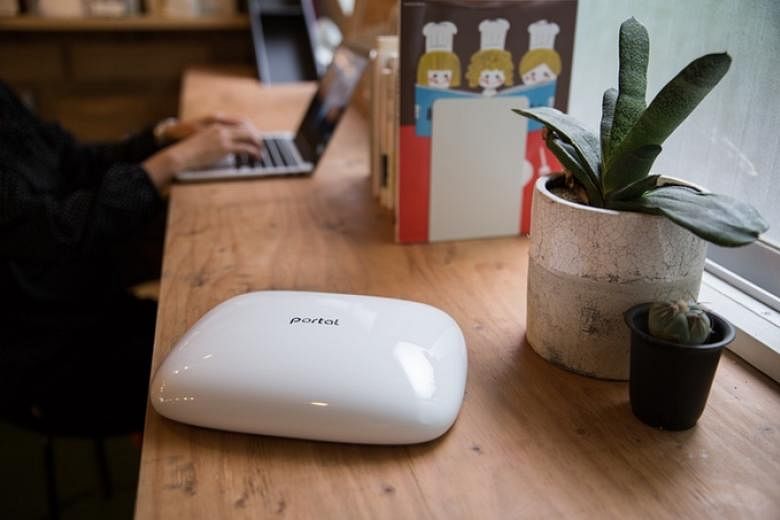Upgrading to a router supporting the 5GHz Wi-Fi band used to be a surefire way to improve your Wi-Fi connectivity and performance.
Not only did such routers offer more throughput than older 2.4GHz routers, they also did not suffer from Wi-Fi interference because they were not yet widely adopted.
This is probably no longer the case nowadays, as most Internet service providers bundle the latest 5GHz routers with their fibre broadband plans. As a result, your neighbours are likely to be using a similar 5GHz router and possibly even the same Wi-Fi channel. This creates network congestion that may affect your Wi-Fi speed.
The solution, according to US startup Ignition Design Labs, is to utilise certain 5GHz Wi-Fi channels originally reserved for weather radar systems. Its Portal WiFi router uses these channels, dubbed FastLanes to avoid congestion, especially during peak hours.
Sounds promising? The idea was persuasive enough for backers on Kickstarter, who funded the router last year. It is now available in Singapore from local distributor Convergent Systems.
However, there is a catch. FastLanes is not supported by all devices. It did not work with my one-year-old Samsung TV or with my Nvidia Shield TV media player. But it was supported by my smartphone and laptop. For these incompatible devices, Portal has a compatibility mode that lets it work with all devices. Doing so, however, disables the FastLanes feature.
-
TECH SPECS
PRICE: $249
ETHERNET INTERFACE: 1 x 10/100/1,000 Gigabit WAN, 4 x 10/100/1,000 Gigabit LAN
STANDARDS: 802.11a/b/g/n/ac
SECURITY: WPA, WPA2-PSK
RATING
FEATURES: 4/5
DESIGN: 3/5
PERFORMANCE: 3/5
VALUE FOR MONEY: 4/5
OVERALL: 4/5
In my testing, the Portal managed a download speed of around 320Mbps, which is average for a mid-range router. It is also difficult to assess the impact of the FastLanes feature as it depends on the density of competing Wi-Fi signals in the vicinity.
If you do not benefit from FastLanes, Portal WiFi has another trick up its sleeves. It can be configured as a mesh Wi-Fi System. You can link multiple Portal units to relay the Internet connection to far-flung areas of your home. But unlike competitors like the Netgear Orbi and the Linksys Velop, Portal does not have a dedicated Wi-Fi connection reserved for communicating between Portal units. This means that client devices connected to Portal units at the edges of the network will see their speeds reduced as some of the bandwidth is used by the Portal units to communicate with each other.
For instance, in a room furthest from the router, the signal strength was at 35 per cent compared to 68 per cent for the next closest room.
The Portal smartphone app (available for iOS and Android) is required to set up the device. It uses Bluetooth to find and connect to the router. This is quite clever, though the phone must be relatively close to the Portal. During the setup process, the router sensibly updates itself with the latest firmware.
These updates not only fixes potential bugs, but the company is also continuing to roll out features via firmware updates. The latest May update added Quality of Service (QoS) functionality, among others.
The app itself does not offer as many options as the Web interface. For instance, adjusting the settings for the firewall, QoS or the parental controls can only be done using a browser. The app interface is relatively easy to navigate and clutter-free. But it can freeze up at times, forcing me to restart the app.
To create a mesh network with an additional Portal, you have to physically connect a LAN cable between the first and the second Portal before the configuration process. This is not as convenient as other mesh Wi-Fi Systems.
Verdict: Its FastLane feature is a bonus if it works, but compatibility could be a problem, especially for older devices. As a mesh Wi-Fi System, the Portal is decent, but not as good as more expensive rivals. I liked that it has the full complement of ports, which is rare for mesh Wi-Fi Systems.


